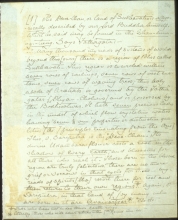Страница 3
(1) The Deva-Chan, or land of "Sukhavati," is allegorically described by our Lord Buddha himself. What he said may be found in the Shan-Mun-yi-Tung. Says Tathagata: —
"Many thousand myriads of systems of worlds beyond this (ours) there is a region of Bliss called Sukhavati . . . . This region is encircled within seven rows of railings, seven rows of vast curtains, seven rows of waving trees; this holy abode of Arahats is governed by the Tathagatas (Dhyan Chohans) and is possessed by the Bodhisatwas. It hath seven precious lakes, in the midst of which flow crystaline waters having 'seven and one' properties, or distinctive qualities (the 7 principles emanating from the ONE). This, O, Sariputra is the 'Deva Chan.' Its divine Udarnbara flower casts a root in the shadow of every earth, and blossoms for all those who reach it. Those born in the blessed region are truly felicitous, there are no more griefs or sorrows in that cycle for them. . . . Myriads of Spirits (Lha) resort there for rest and then return to their own regions. (*) Again, O, Sariputra, in that land of joy many who are born in it are Avaivartyas (†) . . . etc., etc.
(*) Those who have not ended their earth rings.
(†) Literally — those who will never return — the seventh round men, etc.



The text Shan-Mun-yi-Tung has not been identified. However, the smaller Sukhavativyuha Sutra presents a similar quote to the one given by the Mahatma. Tradition says that there were three Chinese translations of this sutra, though only two remain: the Amituo jing(by Kumarajiva) and the Cheng-tsan ching-t'u-fo she-shou ching.
The phrase "encircled within seven rows" has been wrongly transcribed as "encircled with seven rows" in all printed editions.